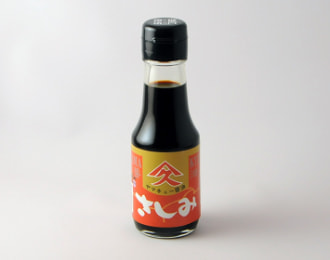An ancient type of sushi known as “funazushi,” long considered a historical precursor to modern raw fish dishes, is experiencing a resurgence as culinary innovators seek to make it appealing to younger audiences and international visitors. This effort aims not only to preserve an age-old tradition but also to adapt it to contemporary palates.
The Heritage of Funazushi

Funazushi has its roots in the Shiga Prefecture of western Japan, where it has been enjoyed for centuries. This unique dish features nigorobuna, or round crucian carp, which are native to Lake Biwa, Japan’s largest freshwater lake. Traditionally, funazushi is characterized by its sour taste and strong aroma, arising from the method of preparation that involves fermenting the fish with rice. However, this once-popular delicacy is now seeing a decline in consumption.
Recent surveys conducted by the Lake Biwa Museum reveal troubling trends: approximately 50% of Shiga residents who have tried funazushi deemed it “too expensive,” while about 30% described its smell as “foul.” The challenges don’t stop there, as the population of nigorobuna itself is diminishing due to invasive species like largemouth bass and bluegill, which threaten their habitat.
Culinary Innovations for Modern Taste Buds
.jpg)
In response to these challenges, local entrepreneurs are initiating innovative approaches to revitalize funazushi. Mamoru Umemura, owner of Kunsaido, a specialty store in Takashima, is experimenting with a modern twist on the classic dish. Aged 52, Umemura has created “cheese funazushi,” which utilizes less pungent male nigorobuna and incorporates cheese instead of traditional fish roe. He remarks, “It goes well with wine,” highlighting his aspiration for the dish to resonate with foreign tourists.
Meanwhile, Tomomi Nakagawa, the 50-year-old owner of Biwako Daughters in Nosu, is also on a mission to keep the culinary heritage alive. Born into a fishing family, Nakagawa has seen the importance of introducing funazushi to younger generations. Her innovative offering includes funazushi sandwiches paired with pungent cheeses, aiming to attract both locals and tourists alike.
Balancing Tradition with Innovation

The efforts of Umemura and Nakagawa illustrate a broader trend within the food industry: the need to adapt traditional cuisines to suit evolving tastes. Michinori Hashimoto, a curator at the Lake Biwa Museum, emphasizes the importance of developing products that align with current consumer preferences while also maintaining sustainable practices for the nigorobuna population. “To carry on the tradition,” Hashimoto states, “it is vital to establish a supply system for products that meet demand and support nigorobuna habitats.”
As fermented foods grow in popularity due to their health benefits and unique flavors, the revival of funazushi presents a compelling case for how traditional recipes can be reimagined without losing their essence. By combining historical practices with modern culinary techniques, local entrepreneurs like Umemura and Nakagawa are striving to ensure that this ancient dish does not fade into obscurity.
The Future of Funazushi
As chefs and restaurateurs experiment with funazushi, they aim to tap into the rising interest in fermented foods. This movement could potentially breathe new life into the declining nigorobuna population and encourage sustainable fishing practices. The adaptation of funazushi not only serves to safeguard a piece of Japan’s culinary history but also positions it as a viable option for future generations.
Through innovative dishes such as cheese funazushi and funazushi sandwiches, these culinary pioneers hope to engage a wider audience and foster appreciation for the flavors of Lake Biwa. With ongoing efforts to redefine this ancient sushi, funazushi might soon regain its status as a beloved delicacy in Japan and beyond.
Tóm lại, cuộc sống của món ăn truyền thống như funazushi đang được hồi sinh nhờ vào những sáng tạo mới mẻ từ các đầu bếp địa phương, giúp nó thu hút sự chú ý của thế hệ trẻ và du khách nước ngoài.
